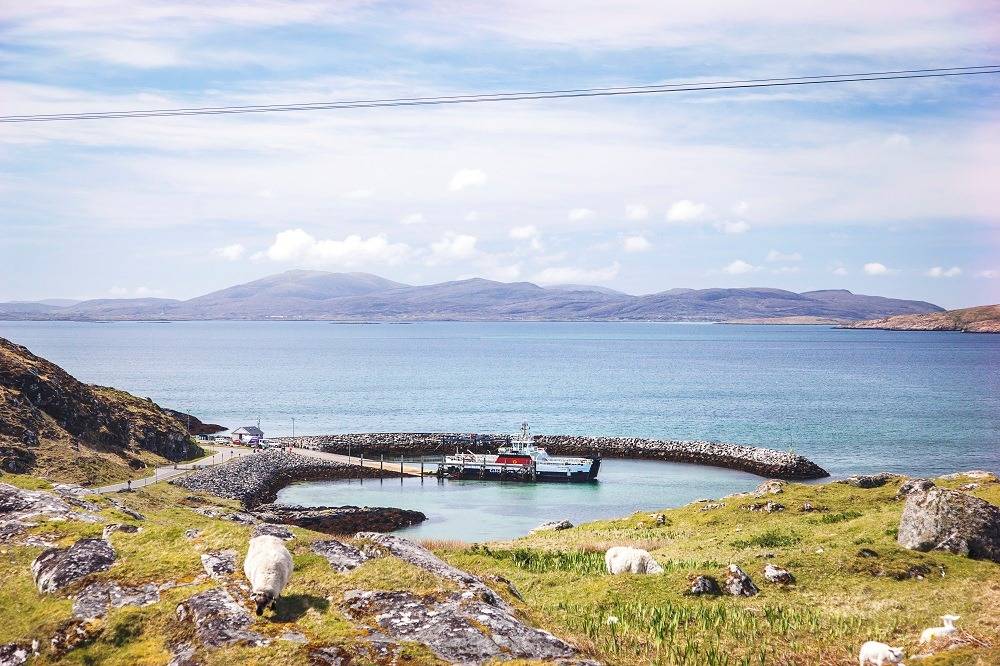The history of CalMac
Isle of Eriskay © CalMac Ferries Limited.
The history of CalMac
Caledonian MacBrayne (known across the west coast as 'CalMac') has a long history stretching back more than 160 years. Its name is synonymous with the west coast of Scotland, providing vital lifeline ferry services and carrying millions of people each year to and from the islands and remote peninsular communities. It has been and remains a major local employer, both onshore and at sea.
It is Scotland's largest ferry operator, running 29 routes to over 50 destinations across 200 miles of Scotland's west coast. With a fleet of 33 vessels completing over 136,000 sailings a year, with crossings taking from 5 minutes to 7 hours. CalMac provides an everyday lifeline service to west coast communities, and for tourism, we play a critical role in enabling its development, which is hugely important for the area's economy.
Caledonian MacBrayne started life in 1851 as a steamer company under the name of David Hutcheson & Co. The main sphere of operation was from Glasgow through the Crinan Canal to Oban and Fort William and then on through the Caledonian Canal to Inverness. Throughout the late 1870s and '80s, the MacBrayne empire continued to expand with a mail run to Islay, Harris and North Uist from Skye and an Outer Isles run from Oban to Barra and South Uist.
In fairly quick succession, new railways began to reach the West Coast - at Fort William, Kyle of Lochalsh and Mallaig and the fleet rosters were altered to meet the new situation. There followed a period of new shipbuilding, largely for the main routes to the islands and remote mainland communities.
Following the Great War of 1914 - 1918, David MacBrayne was operating a much-reduced fleet, and this eventually resulted in the company's withdrawal from the tender for the mail contract. Thanks to a rescue operation jointly with LMS Railway and Coast Lines Ltd, a new company was formed - David MacBrayne (1928).
1948 saw the nationalisation of the LMS shares in the company and the acquisition of the ships. Five years later, the state-owned Scottish Transport Group (STG) was formed to operate not only MacBrayne's services but also those of the Caledonian Steam Packet Company (CSP) on the Clyde together with the dominant Scottish Bus Company.
Soon after, the shipping companies were amalgamated and renamed Caledonian MacBrayne Ltd; lorry services were operated by MacBrayne Haulage, while David MacBrayne was retained for certain minor services. The CalMac vessels soon sported the red CSP lion in the yellow disc in the centre of the red funnel.
From the '60s to the mid-80s, many improvements and refinements took place in order to complete the modern roll on-roll off ferry revolution and ensure that all vessels were operated to the maximum levels of safety.
In 1990 Caledonian MacBrayne threw off the umbrella of STG and became wholly owned by the Secretary of State for Scotland (now the Scottish Government). Today, CalMac remains a major local employer, both onshore and at sea.
You can find out more about CalMac via their website.
More information on visiting the area can be found here.
